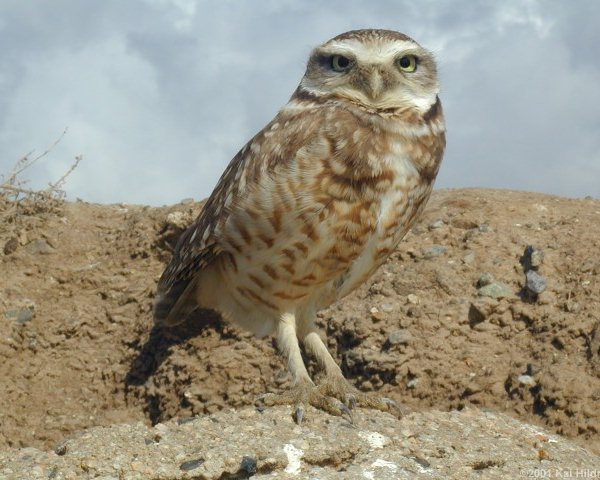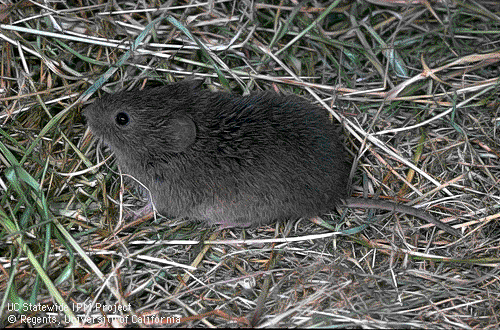Assignment - Seminar 10
- Due: Week of March 31 - April 4 (in seminar) -
 |
 |
| Assignments BIOL 3030 |
Assignment - Seminar 10
- Due: Week of March 31 - April 4 (in seminar) -
 |
 |
Predator-prey interactions:
Lotka-Volterra model
A small population of burrowing owls (Athene
cunicularia) inhabits a
grassland habitat in the BC interior. In this habitat the only
prey
species present is the montane
vole (Microtus montanus).
Biologists studying the owls and voles find that 59% of the owls die
each year. One pair of
owls studied over a full year encountered 3000 voles during the year,
consumed 240 of those voles, and
produced 3 hatchlings that year. The montane voles
have an intrinsic rate of increase of 0.91. As part of their
study,
the biologists carried out a census of the 2 populations and found the
current population sizes to be 715 voles
and 17 burrowing owls.
1. If these 2 populations interact according to the Lotka-Volterra model, what patterns of abundance can be expected for the populations over the following decades? Present the state-space graph for this interaction, and determine the period and amplitude of abundance for each species. Explain each element of the spate-space graph and what the graph means as a whole.
2. The burrowing owl is an endangered species, and so all remaining populations must be studied and, if necessary, managed to ensure their persistence. Given the above parameters, should biologists be concerned about the persistence of this owl population in the mid- to long term? Explain the basis for your answer.
3. What would happen if the voles changed their escape response such that they became slightly more difficult to catch by the owls. According to the Lotka-Volterra model, would this new vole behaviour change the growth pattern of the owl or vole populations? Would the vole and the owl populations be better or worse off as a result of the voles being more difficult to catch (all other parameters being the same)? Provide a detailed explanation of what would happen and explain why the Lotka-Volterra model predicts that outcome.
Your answers must be based on the predictions of the Lotka-Volterra model of predation. As usual, provide any relevant parameters, calculations, graphs, or tables to support your conclusions. Be sure to fully label your state-space graphs.